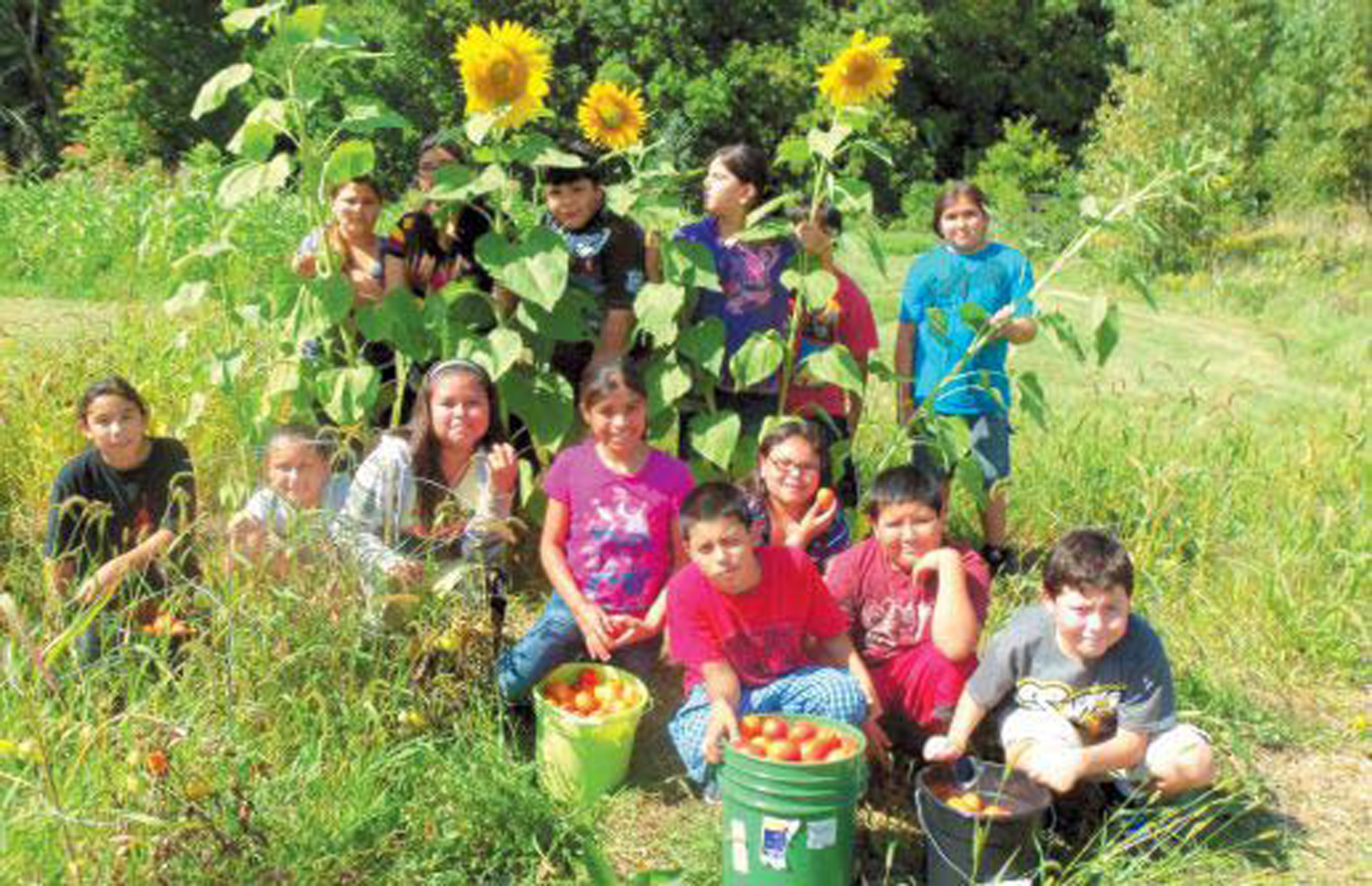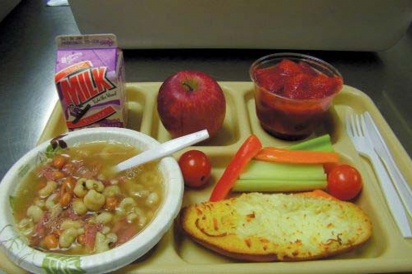Tsyunhehkw^ and the ‘Three Sisters’ Garden
Oneida Nation school gardens teach tradition, lifelong lessons
“We try to always reconnect to what the land gives us and how we need to care for it,” said Becky Nutt, High School Life and Environmental Science teacher.
Elementary students follow the entire growing process. They start seedlings in their classrooms, transplant the plants into pots, and then plant the garden. In summer, students and their families volunteer to care for the garden in exchange for a share of the produce. A young orchard was planted as part of the school’s garden and the first apple crop was harvested last fall. Produce from the school garden at the high school is also used in the cafeteria.
“We teach them to share, cook and to plant,” said Maxine Thomas, Elementary Language and Culture teacher. “They know what each vegetable is, how big it is going to get, where their food comes from — like that ketchup is from tomatoes and potatoes grow under the ground — and how to store what they grow.”
The families pick, freeze and can produce from the garden and are provided with recipes on how to use the items. At the end of the year, the school hosts a family feast and serves carrots, onion, and potatoes from the garden in a buffalo stew. Students also har- vest the pumpkins to bake pies for the community’s Thanksgiving Dinner. In March, students tap maple trees; the syrup is used for a pancake dinner for parents.
“Especially in the younger ages, the hands-on part of school gardening is something that awakens kids as far as their enthusiasm for the food that they grow — especially when they can see it in action,” said Jesse Padron, Oneida Nation School Food Service director.
In Nutt’s horticulture course, students learn the process of growing from seed to planting and save seeds to grow the following year. Last year they planted vegetables in six raised beds. A large open area was used to grow potatoes for a potato trial with the Brown County UW-Extension. A traditional “three sisters" garden -- corn, beans and squash -- was also planted to teach the cultural aspect of gardening.
The Three Sisters garden is a very important cultural element. The idea of planting them together has come down through many generations. The bean fixes the nitrogen in the soil and provides extra nitrogen for the corn. The squash provides shading and keeps moisture in and the corn supports the beans.
They all work together synergistically and make a complete system and when they are eaten together they provide a good nutrition system, too,” Nutt said.
Growing the Three Sisters connects the students to the importance of maintaining traditions and learning how to cultivate, prepare and enjoy traditional foods. The school gardens are just one link in the chain of the Oneida Community Integrated Food Systems initiative that works to insure self-sustenance and food security for the community.
Another link is a culturally and community-based agricultural program called Tsyunheh- kw^ —loosely translated as “life sustenance.” It consists of two components: The agricultural component is located on a certified organic farm that raises grass-fed beef, free-range poultry, farm-fresh eggs and organic produce. The second component is the cannery, which processes the Oneida’s traditional white corn into soup, dehydrated corn, fresh-hull corn, flour, bread and corn mush.
“Tsyunhehkw^ does an excellent job at spreading the knowledge that our youth need to, not only understand where their food comes from, but how it is grown and the significance to our culture, as well as fostering interest in agricultural careers,” Padron said.
Honoring the traditions, the school’s food service purchases white corn from the cannery to make corn soup — a light broth with corn and smoked turkey meat — about once a month. Locally-grown produce such as squash, apples and carrots and grass-fed beef and buffalo meat are often incorporated into the school’s lunch line. Much of it comes from the Oneida Nations Orchard and Farm.
Each year the Oneida Nation plants several acres of traditional Iroquoian White Corn. It is planted and cultivated with modern equip- ment in accordance with traditional ceremonies and the lunar cycle. In August, the Green Corn Ceremony is celebrated, setting the stage for the Community Harvest and Husking Bee in the fall. The corn is hand-harvested and after husking, two hundred braids with sixty-five ears each hang to dry in the traditional manner. Nutritional analysis has shown a higher protein value for white corn as compared with other varieties of conventional corn.
The school is a member of Brown County’s LIVE54218 initiative and has worked with a Farm to School coordinator that organizes contacts with local farmers in the region. Placards are used on the lunch lines that advertise the farmer that provided the item. The school was recently awarded a grant to develop a composting system for food waste in the cafeteria.
“Farm to School is a great effort for both the school system and the community, and I think it has brought us closer together,” Padron said.
And the life sustenance cycle continues.






